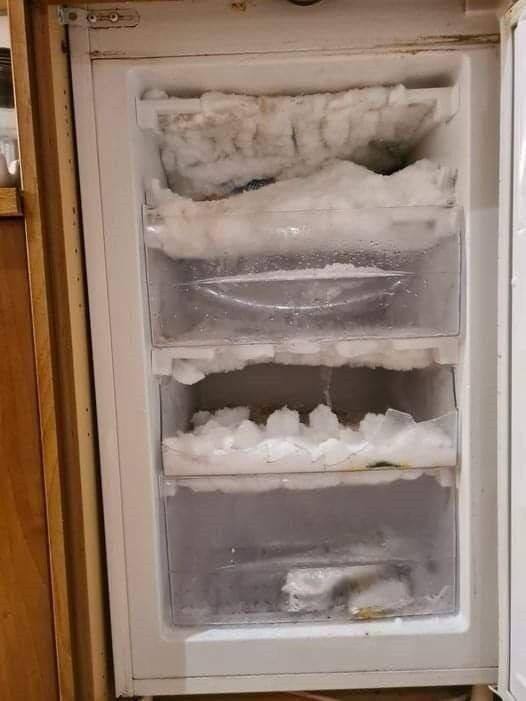ADVERTISEMENT
Regularly defrosting your freezer is an important process to maintain the efficiency of your appliance and reduce your electricity bill. The layer of ice that forms inside can have various effects on the efficiency, lifespan and, above all, the consumption of your appliance. Find out why defrosting your freezer saves energy and how you can do it quickly without having to unplug it.

Why does the freezer need to be defrosted regularly?
Regular defrosting of the freezer is an important operation to maintain the efficiency of the appliance and avoid high energy consumption. This operation, if carried out correctly, would save 30% of consumption for every half centimeter of frost removed. Here are the reasons.
- Reduce energy consumption
The layer of ice that forms inside the freezer is several centimeters thick and can reduce the efficiency of the motor, making it work harder and therefore consume more energy. This is because the layer of ice acts as a barrier to the flow of heat from the outside environment to the motor, causing it to increase speed to maintain the desired temperature in the freezer. In addition, the thermal resistance of the freezer walls increases, making it more difficult to transfer heat from the outside environment to the inside of the appliance. By eliminating excess ice, the motor works more efficiently and consumes less electricity.
- Avoid overheating
continued on next pageSince the layer of ice inside the freezer prevents proper heat exchange with the outside environment, the motor may overheat. If the motor overheats, its efficiency decreases and energy consumption increases. In addition, overheating can damage the motor and shorten the life of the appliance. Therefore, by defrosting the freezer, you prevent the motor from overheating and protect the appliance from damage that can occur due to excessive heat.
- Improve storage efficiency
The layer of ice inside the freezer can hinder the circulation of cold air, reducing the absorption capacity of the food. If the cold air does not circulate properly, some areas of the freezer can become warmer than others, creating ideal conditions for bacteria to grow and food to spoil. Removing the accumulated ice ensures better circulation of cold air and therefore better preservation of food, thus avoiding waste.
How often should you defrost your freezer?
The ideal time to defrost the freezer depends on the layer of ice that has formed inside the appliance. In general, it is recommended to carry out this process when the layer of ice has reached a thickness of about 3 to 4 millimeters, since energy consumption can increase by up to 30% at this point. If the appliance is used frequently and a layer of ice forms quickly, it will have to be defrosted more often. On the contrary, with less frequent use, the layer of ice forms more slowly and the defrosting frequency can be reduced.

How to quickly defrost the freezer without unplugging it?
Of course, the easiest way to defrost a freezer is to unplug it, but how do you do it even when it’s plugged in? If you unplug the appliance, there’s a risk that the shelf life of the food stored in the freezer and refrigerator will be compromised. Here are the steps to follow to defrost the appliance, even when it’s plugged in:
continued on next page- Remove all food from the freezer and store in a cool place
- Place a pan of boiling water in it to increase the temperature and collect the water produced during defrosting.
- Close the freezer and wait for the ice to melt. This way, the heat from the boiling water will help melt the ice faster.
- Open the freezer from time to time to let warm air in, which will also help the ice melt faster.
- Remove any remaining ice with a cloth, towel or sharp object. Avoid using sharp or pointed objects as they may damage the freezer surface and cause injury.
- Dry the freezer thoroughly.
- Close the freezer and wait until the temperature inside the appliance returns to normal before putting the food back in.
